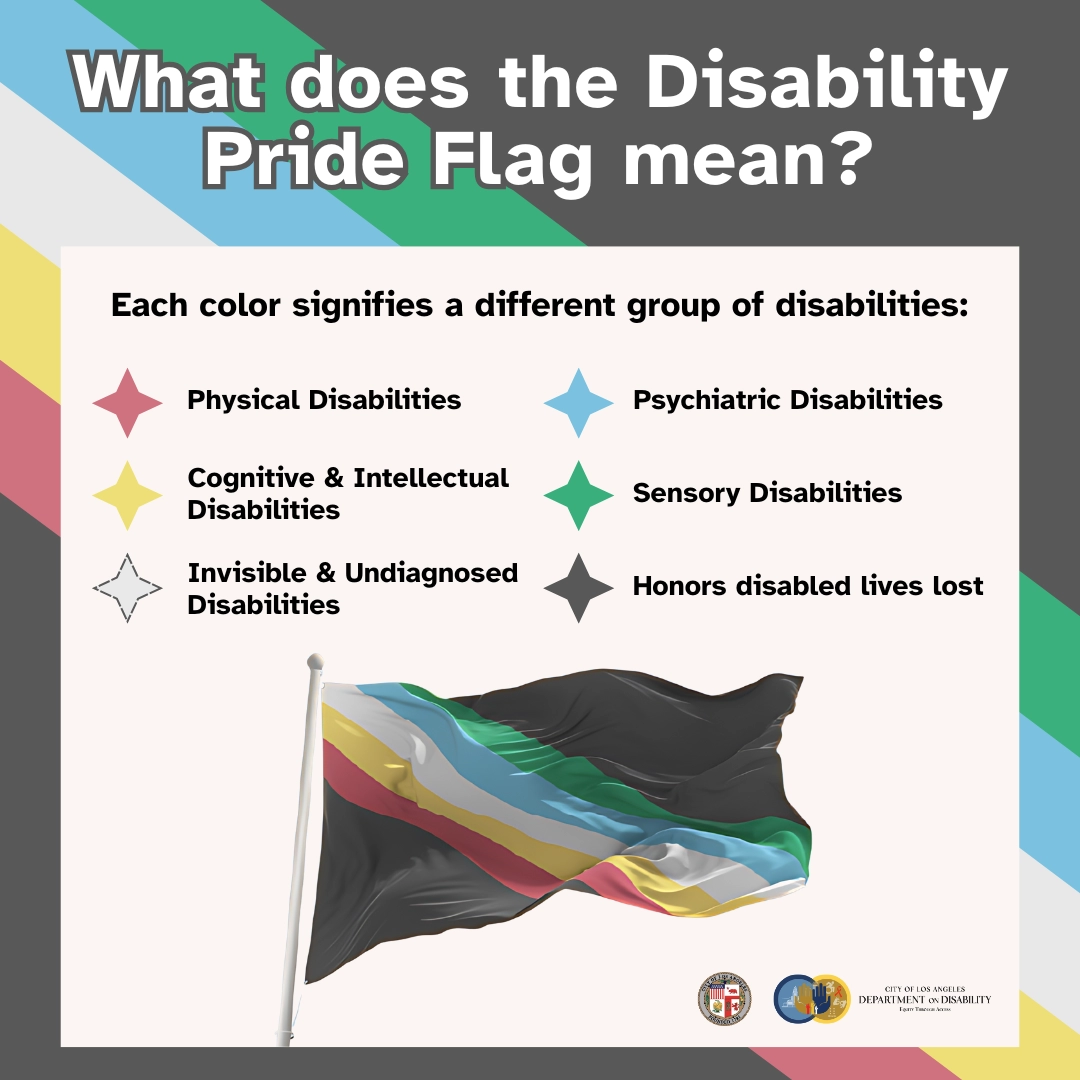About the Disability Pride Flag (2021 Diagonal Version)
The Disability Pride Flag is a symbol of unity, identity, and grassroots resistance within the global disability community. This version of the flag, created in 2021 by disabled advocate Ann Magill, features a charcoal gray background with five muted diagonal stripes—each representing a different aspect of disability.
The diagonal orientation was chosen to symbolize "cutting across" the vertical walls and horizontal ceilings that keep disabled people segregated. The stripes start in the upper left corner (where the stars are on the U.S. flag, symbolizing honor) and move toward the lower right, representing disabled people’s place in the wider world.
While many flags follow the tradition of two or three colors, this flag uses six to reflect the wide diversity of disability experiences.

Flag Symbolism
Red – Physical Disabilities
Red represents people with physical disabilities, such as mobility impairments, limb differences, chronic pain, and other conditions that affect the body’s structure or function. It stands for strength, resilience, and the ongoing advocacy for physical accessibility in public and private spaces.
Gold (Yellow) – Cognitive and Intellectual Disabilities
Gold symbolizes individuals with cognitive and intellectual disabilities, including autism, Down syndrome, ADHD, learning disabilities, and other developmental conditions. The color reflects creativity, innovation, and the need to value neurodiverse ways of thinking and being.
Green – Sensory Disabilities
Green represents people with sensory disabilities such as Deafness, blindness, low vision, hard of hearing, DeafBlindness, and sensory processing disorders. Green was chosen to symbolize growth and connection, and it honors the cultures, languages, and leadership of sensory disability communities.
Blue – Psychiatric Disabilities
Blue reflects individuals with psychiatric or mental health disabilities, including depression, anxiety, bipolar disorder, schizophrenia, PTSD, and more. The color represents the importance of mental health visibility, advocacy, and the need for compassion and peer support.
White – Invisible and Undiagnosed Disabilities
White stands for people with disabilities that are not immediately visible to others, such as chronic illness, autoimmune conditions, fatigue-related disabilities, and those who remain undiagnosed. White represents invisibility and the broad spectrum of experiences that are too often overlooked or misunderstood.
Charcoal Gray Background
The charcoal gray background of the flag represents mourning and rage. It honors disabled people who have died due to systemic ableism, including lack of access to healthcare, violence, institutional neglect, suicide, and marginalization. It also symbolizes protest and the urgency of disability justice.
Design Considerations
This version of the flag was created with accessibility in mind. The muted tones were selected to be easier on people with light sensitivity, migraines, and visual processing disorders. The diagonal layout allows the design to be felt when embossed—making it more accessible to people who are blind or low vision. The charcoal background is intentionally lighter for digital screen use.
Ann created the flag as a way for disabled people to recognize and rally around one another—not just within national borders, but across them. The idea grew out of a personal moment of frustration during an ADA anniversary event held behind closed doors. What began as a wish for visibility became a powerful call for solidarity and pride.
“I designed this flag to be for all Disabled people. I wanted something we could wave proudly in public. Something that says: We are here. We are united. And we are not invisible.”
As the design evolved, members of the disability community offered feedback, suggestions, and support—helping shape a flag that reflects both our diversity and our unity.
